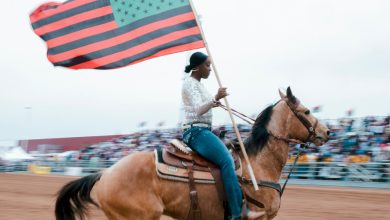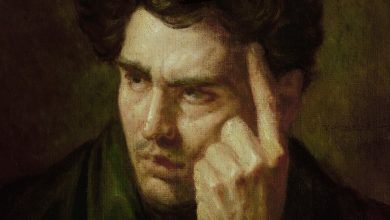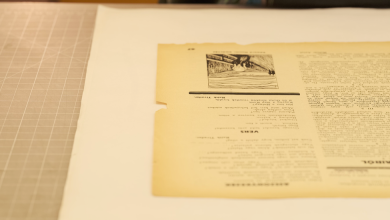As a Black Bard of the South, Randall Kenan Toppled Monuments

For most of his life, wherever Randall Kenan went, he saw his name. A writer of both fiction and nonfiction, he grew up in Duplin County in southeastern North Carolina, 13 miles from the county seat of Kenansville — named for James Kenan, a Revolutionary War colonel who became a North Carolina state senator and a founding trustee of the University of North Carolina at Chapel Hill. As a U.N.C. student in the 1980s, and then a professor of creative writing there from 2003 until he died in 2020, Randall Kenan saw his name on the football stadium, a dorm hall, street signs and his colleagues’ distinguished professorships, funded by the trust of William Rand Kenan Jr., James’s great-great-grandson and the son of William Sr., who was a Confederate soldier and prominent white supremacist.
The name was both his and not his: Kenan’s father’s family — including the great-aunt Mary Kenan Hall, who raised him — were not the descendants of those Kenans, the white ones, but of the slaves they once owned, at Liberty Hall, their ancestral plantation home in Kenansville.
Reimagined as the hamlet of Tims Creek, the lowlands of Duplin County and the author’s hometown of Chinquapin became a leitmotif, the key signature of Kenan’s fictional oeuvre, which encompasses a 1989 debut novel, “A Visitation of Spirits,” and two story collections nearly three decades apart: “Let the Dead Bury Their Dead” (1992) and “If I Had Two Wings” (published in 2020, just weeks before he died). While all around him Kenan watched America honor the white lineage from which he got his name but not his blood, on the page the author held his own history, the Black Kenans’ history, front and center. And now, as America is reconsidering some of the names it has engraved across its institutions and infrastructure, clearing space for other legacies long suppressed, Kenan’s work, too little known during his lifetime, feels particularly resonant.
He began writing “A Visitation of Spirits” at U.N.C., and by the time he published it he’d left the South behind for New York, where he became an assistant at Random House, and where his was just another name. The novel follows one night in the life of a precocious high school student named Horace Cross who inwardly battles the homosexuality that would alienate him from his God-fearing community and family of Baptist ministers and deacons. His older cousin, the Rev. James Malachai (Jimmy) Greene, has already denied his own predilection for men, and advises Horace to do the same.
Attempting to turn himself into a bird to escape the human world, Horace performs a spell that accidentally summons a demon into his soul, setting off a delirious and violent rehashing of the Cross family history. Seeing before him visions of all “his folk, his kin” in the pews of his church, some back from the dead, Horace can tell he’s running from them, but why? And why do they draw him back?
“Ghosts of the past,” the demon says. “The very stuff of which the future is made. This is the effluvium of souls that surround men daily. All you have to do is take the scales off your eyes and look and see.”
Horace’s grandfather, Ezekiel (Zeke) Cross, summons his own ghosts — first in a cinematic chapter set in a depressing diner, when he accuses his widowed sister-in-law Ruth of driving his brother to drink himself to death; and then in the title story of “Let the Dead Bury Their Dead,” as a sort of bard of the Crosses’ collective past.
In that story, Jimmy, Tims Creek’s “self-appointed historian,” records an amateur oral history of the town as told to him by his Uncle Zeke. The story arrives at the end of the book, the consummation of a series of voyeuristic intrusions into the sometimes disturbing intimacies of recurring Tims Creek characters: a toddler who can talk to dead people and live hogs, a respected physician and his incestuous children, a woman coming to terms with her dead grandson’s gayness, a schoolteacher who commits infanticide.
If Zeke’s account is dubious (“Ain’t one bit of truth in it,” Ruth says), it’s only a jab at the frailty of history itself, the impossibility of fact. For his own 1999 nonfiction book, “Walking on Water: Black American Lives at the Turn of the Twenty-First Century,” Kenan spent six years conducting hundreds of interviews, from Alaska to Martha’s Vineyard to Louisiana to Los Angeles, trying to synthesize the meaning of the Blackness around and within him. Right in the preface, Kenan calls the nearly 700-page book “a failure,” having run up against the inevitable futility of the ethnographer’s task, the attempt to summarize the ineffable.
In Zeke’s version, before the Civil War runaway slaves led by a man named Pharaoh founded a “maroon society” on the land where Tims Creek now stands. Pharaoh was caught and sold to “the family in North Carolina in them days,” becoming Senator Owen Cross’s “No. 1” slave, the man’s most prized possession, working his way deeper into his master’s favor before eventually escaping for good, setting the plantation on fire in his wake.
Edited and with exhaustive footnotes and an introduction (dated in the then-future year 2000) by Jimmy’s relative Reginald Gregory Kain (who shares Kenan’s credentials and initials), “Let the Dead Bury Their Dead” is a story-within-a-story-within-a-book, an ingeniously metafictional Russian doll of blithely unreliable narration. Yet somehow, whether owing to regional or racial bias, or to the author’s deeply ingrained humility and privacy, Kenan has not taken his rightful place in the postmodern canon, though Tims Creek proved as generative as any Macondo or Yoknapatawpha.
But Kenan’s mythmaking was not just for the sake of craft, or genre: Taken together, his fiction amounts to a personal toppling of monuments, like the removal of the bronze Silent Sam from U.N.C.’s campus in 2018. In Zeke Cross’s telling, it’s not his namesake white man but the Black escapee, Pharaoh, who emerges as the true pioneer, the folkloric hero, the founding father.
To the naked eye there is nothing romantic, let alone magical, about the real Duplin County. Across this deeply Christian, working-class corner of rural North Carolina, buffered by miles of swamp and farmland from the big cities of Raleigh and Wilmington, unassuming Baptist churches are as commonplace as hog farms. Homes, whether colonial-style or mobile, are protected by thin white crosses where driveways meet country roads.
On one such road, somewhere along the 13-mile stretch of Highway 41 between the town of Wallace and Chinquapin, there is a billboard advertising tours of the restored Liberty Hall plantation. “The Antebellum South was once treasured for its grace and charm,” its website says. The site “stands today as a proud reminder of a time that exists only in history books.”
On that same road there also stands another, subtler sign marking the private grounds of the Kenan family cemetery. Randall Kenan is buried miles away, in a plot on the side of a back road marked only by a single pear tree, next to Mary Kenan Hall. It’s tempting to project onto his unadorned grave site a loneliness known only by the living, but Kenan had an uncanny ability to see the mystical in the mundane. As the Crosses teach us again and again: Just because a place doesn’t announce itself doesn’t mean it’s not there.




